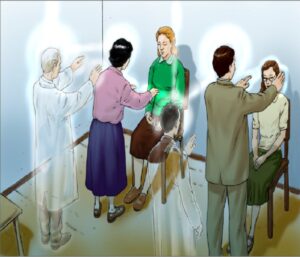Allan Kardec: The Codifier of Spiritism
Allan Kardec is one of the most influential figures in the spiritual history of humanity. A 19th-century French philosopher, educator, and researcher, he became known as the codifier of Spiritism—a doctrine that combines science, philosophy, and religion to explain life, death, and the immortality of the soul.
But who was this man really? What drove him to dedicate his life to studying spiritual phenomena? And why does his work remain so relevant and transformative even after more than 160 years?
In this comprehensive article, you will explore Allan Kardec’s life, mission, and legacy. We will examine his journey, his key works, the challenges he faced, and how his teachings continue to enlighten millions around the world.
Get ready to dive into a definitive and foundational guide about Allan Kardec, optimized to educate, inspire, and help you understand the significance of this extraordinary figure.
Who Was Allan Kardec?
Allan Kardec was born on October 3, 1804, in Lyon, France, as Hippolyte Léon Denizard Rivail. From a young age, he stood out for his intelligence, curiosity, and keen sense of observation.

A disciple of the renowned Swiss educator Johann Heinrich Pestalozzi, Kardec grew up in an environment where education was seen as a tool for moral and social transformation. This pedagogical foundation deeply influenced his future mission as the codifier of Spiritism.
Besides being an educator, Rivail was also a writer, translator, and scientist. However, it was only in adulthood that fate brought him into contact with spiritual phenomena that would forever change his life—and humanity.
Historical Context: 19th-Century France
To understand Allan Kardec, we need to consider the context of his time.
The 19th century was a period of profound transformation:
- The Enlightenment had challenged the absolute truths of the Church.
- The French Revolution introduced ideals of liberty, equality, and fraternity.
- Advances in science and technology reshaped the way people lived and thought.
Yet, there was a spiritual void. Many sought answers beyond the growing materialism. In this context, phenomena such as table-turning, which drew crowds in Europe and the United States, sparked immense interest.
Initially skeptical, Kardec decided to investigate these phenomena not as entertainment but as a scientific study.
From Educator to Spiritual Researcher
Hippolyte Rivail already had an established career as an educator when he learned about table-turning. At first, as a rigorous scientist, he doubted its authenticity. Could spirits really communicate through knocks and moving objects?

In 1854, he began attending meetings in Paris where these phenomena were studied. By applying a methodical approach—recording, comparing, and analyzing answers received through mediums—Rivail realized there was intelligence behind these manifestations.
Thus began his codification work, gathering teachings from higher Spirits into a structured, logical, and accessible system. At this time, he adopted the pseudonym Allan Kardec, inspired by a supposed past incarnation as a Celtic druid.
The Codification of Spiritism
Kardec’s work resulted in five fundamental books, known as the Spiritist Pentateuch:
- The Spirits’ Book (1857) – Contains 1,019 questions and answers on God, the immortality of the soul, reincarnation, the spiritual world, and moral laws. It marks the foundation of Spiritist Doctrine.
- The Mediums’ Book (1861) – A practical guide to mediumship and communication between the living and the dead. Essential to understanding spiritual phenomena.
- The Gospel According to Spiritism (1864) – Offers a moral interpretation of Jesus’ teachings for everyday life. The most studied book in Spiritist centers.
- Heaven and Hell (1865) – Explores divine justice, including accounts from disembodied spirits about their post-death conditions.
- Genesis (1868) – Analyzes the origin of the world, miracles, and prophecies from a Spiritist perspective.
Also read: The 9 main types of known mediumship
Allan Kardec’s Mission
Kardec understood that his mission was not to create a new religion but to reveal and organize the teachings transmitted by Spirits. He stated:
“Spiritism is both a science of observation and a philosophical doctrine. As a practical science, it consists of relationships that can be established with Spirits; as philosophy, it embraces all moral consequences that stem from these relationships.”
His mission included:
- Offering a rational perspective on faith.
- Reconciling science and spirituality.
- Highlighting the moral purpose of human life.
- Consoling those who mourn.
Challenges and Opposition
Like other great reformers, Kardec faced strong resistance:
- The Catholic Church accused him of heresy.
- Materialist scientists mocked his research.
- He suffered threats, defamation, and persecution.
Despite this, he remained steadfast, always affirming that Spiritism was not the enemy of science or religion, but a bridge between the two.
Death and Continuity
Allan Kardec passed away on March 31, 1869, in Paris at 64, due to an aneurysm. His death caused widespread mourning. On his tomb at Père Lachaise Cemetery, the inscription reads:
“To be born, to die, to be reborn, and to progress always, such is the law.”
After his death, his wife Amélie Boudet, together with loyal disciples, continued spreading Spiritism. The movement grew rapidly worldwide, particularly in Brazil, where it found fertile ground.
Spiritism in Brazil
Brazil became the largest Spiritist nation. Kardec’s works were translated in the 19th century, and in the 20th century, figures like Chico Xavier strengthened the movement.
Today, over 3.8 million Brazilians identify as Spiritists, plus millions of sympathizers who visit centers for spiritual treatments, passes, and studies.
The Brazilian Spiritist Federation (FEB) is the main institution promoting Spiritist Doctrine in Brazil.
Allan Kardec’s Immortal Legacy
His legacy can be summarized in three main contributions:
- Rational faith – Spirituality without dogma, inviting reason.
- Reincarnation as a natural law – Offering a logical explanation for human inequalities.
- Spiritual consolation – Affirming the immortality of the soul and life beyond death.
His teachings continue guiding those seeking answers to life’s challenges, losses, and modern dilemmas.
Fun Facts About Allan Kardec
- He was multilingual.
- Authored educational books before Spiritism.
- Never charged for his mediumistic research.
- His pseudonym comes from druidic tradition.
- Recognized as both an educator and a spiritual codifier.
Why Study Allan Kardec Today?
In a world of speed, anxiety, and materialism, Kardec’s teachings offer:
- Hope in the face of death.
- Meaning through reincarnation.
- Balance between faith and reason.
- Moral tools for ethical and fraternal living.
Recommended Reading:
- Posthumous Works by Allan Kardec
- Mandate of Love by Suely Caldas Schubert
- Kardec: The Biography by Marcel Souto Maior
👉 Available at Amazon Spiritist Books
Conclusion
Allan Kardec’s life and work show that spiritual knowledge does not oppose science or faith. On the contrary, reason and spirituality together provide a complete understanding of existence.
Kardec left the world a message of hope, divine justice, and infinite spiritual progress. His work continues to transform hearts and minds, inspiring millions to live with more love, fraternity, and spiritual responsibility.
FAQ – Frequently Asked Questions
- Did Allan Kardec found a religion?
No. He codified Spiritism, a philosophical, scientific, and spiritual doctrine. - What was the first Spiritist book?
The Spirits’ Book (1857) marks the beginning of Spiritist Doctrine. - Where is Allan Kardec buried?
At Père Lachaise Cemetery, Paris, France. - Does Spiritism believe in eternal hell?
No. Spiritual suffering is temporary and depends on the moral development of the spirit. - What is the difference between Spiritism and popular spiritualism (e.g., Umbanda, Candomblé)?
Kardec’s Spiritism is a philosophical doctrine, distinct from Afro-Brazilian religions, though both value communication with spirits.
Share this content:













Post Comment